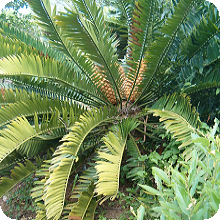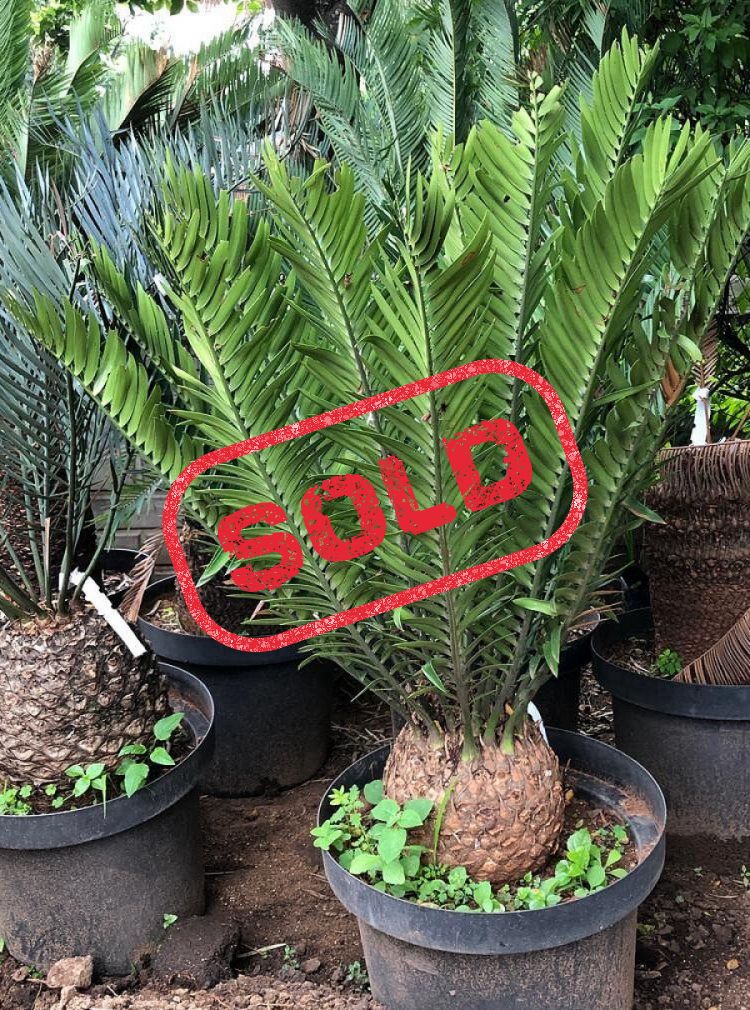|
Division: Cycadophyta
|
| Class: Cycadopsida
|
| Order: Cycadales
|
| Family: Zamiaceae |
| Genus: Encephalartos |
| Species: E. natalensis |
Conservation Status:
 |

E. natalensis
Natal Giant CycadEncephalartos natalensis is a species of cycad that is found in Qumbu and Tabankulu areas of the northern part of the Eastern Cape, through most of KwaZulu-Natal up to the upper catchment areas of the Mkuze and Umfolozi rivers near Vryheid in South Africa.
It is an evergreen quick-growing cycad, up to 6.5 m high and with a stem or trunk of about 0.4 m in diameter. The stem sometimes branches, but reclines only when other stems emerge from the base. It has a golden, woolly crown, which increases on production of cones or new whorls of leaves. The leaves are of medium size, about 1.5-3 m long and slightly curved or straight. The leaflets are about 160-230 x 25-45 mm, dark green and entire or with 1-5 teeth on one or both margins. The lower leaflets are reduced to spines. New leaves and cones are covered with yellowish brown wool. There are separate male and female plants; both genders produce 2 or 3 orangy-yellow to orangy-red cones.
The male cones are cylindrical, yellowish-green, velvety, about 450-500 mm long, and 90-120 mm across, and shed their pollen in April to June. The female cones are oblong to oblong-ovate, about 500-600 mm long and 250-300 mm in diameter. The faces of the cone scales are wrinkled. The cones disintegrate spontaneously from November to January, each yielding 415-510 bright red seeds which are about 25-35 mm long and 12-18 mm in diameter.
The specific name
natalensis means from Natal, which is now KwaZulu-Natal. This cycad is the most variable of all
Encephalartos species.
|
|
E. natalensis for sale at AfricaCycads.com:
|










